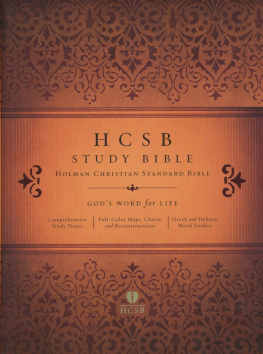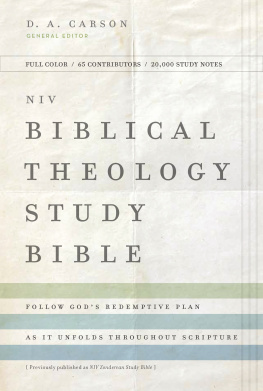Abbreviations Old Testament
| Gn | Genesis |
| Ex | Exodus |
| Lv | Leviticus |
| Nm | Numbers |
| Dt | Deuteronomy |
| Jos | Joshua |
| Jdg | Judges |
| Ru | Ruth |
| 1 Sm | 1 Samuel |
| 2 Sm | 2 Samuel |
| 1 Kg | 1 Kings |
| 2 Kg | 2 Kings |
| 1 Ch | 1 Chronicles |
| 2 Ch | 2 Chronicles |
| Ezr | Ezra |
| Neh | Nehemiah |
| Est | Esther |
| Jb | Job |
| Ps(s) | Psalm(s) |
| Pr | Proverbs |
| Ec | Ecclesiastes |
| Sg | Song of Songs |
| Is | Isaiah |
| Jr | Jeremiah |
| Lm | Lamentations |
| Ezk | Ezekiel |
| Dn | Daniel |
| Hs | Hosea |
| Jl | Joel |
| Am | Amos |
| Ob | Obadiah |
| Jnh | Jonah |
| Mc | Micah |
| Nah | Nahum |
| Hab | Habakkuk |
| Zph | Zephaniah |
| Hg | Haggai |
| Zch | Zechariah |
| Mal | Malachi |
New Testament
| Mt | Matthew |
| Mk | Mark |
| Lk | Luke |
| Jn | John |
| Ac | Acts |
| Rm | Romans |
| 1 Co | 1 Corinthians |
| 2 Co | 2 Corinthians |
| Gl | Galatians |
| Eph | Ephesians |
| Php | Philippians |
| Col | Colossians |
| 1 Th | 1 Thessalonians |
| 2 Th | 2 Thessalonians |
| 1 Tm | 1 Timothy |
| 2 Tm | 2 Timothy |
| Ti | Titus |
| Phm | Philemon |
| Heb | Hebrews |
| Jms | James |
| 1 Pt | 1 Peter |
| 2 Pt | 2 Peter |
| 1 Jn | 1 John |
| 2 Jn | 2 John |
| 3 Jn | 3 John |
| Jd | Jude |
| Rv | Revelation |
Ancient Versions
| Aq | Aquila |
| Jer | Jerome |
| Lat | Latin |
| LXX | Septuagint |
| MT | Masoretic text |
| Sam | Samaritan Pentateuch |
| Sym | Symmachus |
| Syr | Syriac |
| Theod | Theodotian |
| Vg | Vulgate |
General
| AD | anno Domini , in the year of our Lord |
| alt | alternate |
| BC | before Christ |
| c. | century |
| ca. | circa (about, approximately) |
| cf. | compare |
| chap(s). | chapter(s) |
| d. | for example |
| Eng | English |
| esp. | especially |
| etc. | et cetera |
| Gk | Greek |
| Hb | Hebrew |
| HCSB | Holman Christian Standard Bible |
| i.e. | that is |
| Lat | Latin |
| lit | literal, literally |
| ms(s) | manuscript(s) |
| NT | New Testament |
| OT | Old Testament |
| pl. | plural |
| r. | reigned |
| sg. | singular |
| Tg | Targum |
| v(v). | verse(s) |
| = | means, is equivalent to |
| // | parallel passage(s) |
Introduction Overview Lukes purpose in Acts coincides with his purpose in the Gospel of Luke.
verse(s) | | = | means, is equivalent to |
| // | parallel passage(s) |
Introduction Overview Lukes purpose in Acts coincides with his purpose in the Gospel of Luke.
In this two-volume work, he explains how God has continued to work out his redemptive purposes through the church. What Jesus started, the Spirit continues through his people (). Luke makes these decisions based on his purpose of presenting an accurate account of what God is doing through the early church. Luke gives his readers typical or representative experiences that serve to advance Gods purpose. For this reason, we can say Luke is writing theological historyan accurate record of events and words that demonstrates what God has been doing in and through his people. The first half of Acts features Peter as the primary character, while the second half features Paul.
The Unity of Luke-Acts Since the work of Henry Cadbury in the 1920s ( The Making of Luke-Acts ), most scholars recognize that Luke-Acts must be read as two parts of a single work. This affirmation of the unity of Luke-Acts not only points to the need to interpret any one passage within the literary context of this wider narrative but also allows the reader to notice the numerous parallels between the two parts of the narrative. These parallels in turn reveal the theological emphases of the author, and these emphases often serve to address the needs of the church. In his Gospel, for example, Luke emphasizes the descent of the Holy Spirit on Jesus as he begins his ministry on earth (). Such parallelism addresses a practical concern of the church: Luke encourages the early Christians that although Jesus is no longer with them in person, the Spirit, who works behind him, is the one who is working behind the church that bears his name. Although some scholars have continued to question the unity of Luke-Acts, most see this as the basic assumption behind any informed reading of the Lukan writings.
In terms of genre, these two works are not simply representatives of the ancient biographies and histories; together they point to the faithful God who fulfills his promises to Israel. In terms of narrative flow, several themes introduced in Luke (e.g., Holy Spirit, Gentiles, repentance, Samaria/Samaritans, temple, rejection of the prophet) are fully developed only in Acts; therefore, to read only one part would provide a partial picture. In terms of theological framework, one finds the same emphases on significant theological topics: identity of Jesus, the mission of the apostles, the progression of the kingdom of God, the universal relevance of the gospel message. In terms of the use of OT paradigms, both works also draw from one prophetic tradition in the description of the climactic work of God at the dawn of the eschatological era. The recognition of the unity of Luke-Acts also affects our consideration of several significant background issues for the reading of Acts: authorship, audience/recipients, date of writing, purpose, and literary structure. Authorship Who wrote the Gospel of Luke and Acts? Overwhelming external evidence points to Luke, the companion of Paul, as the author.
The oldest manuscript (late second century AD) of the Gospel identifies Luke in the attached title. The roughly contemporary Muratorian Canon, as well as early church fathers beginning with Irenaeus, supports this identification. The internal evidence in the Lukan writings supports this. The we-passages in Acts, where the narrator includes himself in the story (). Since Luke is identified as a medical doctor in ). According to early traditions, Luke was a resident of Antioch.
Noting that the we-passages begin with the account of Pauls travel in Macedonia (), it is also possible that Luke came from Macedonia. Some have therefore suggested that Luke wrote from Antioch or Macedonia, while others, for various reasons, have pointed instead to Caesarea, Asia Minor, Greece, and even Rome. Most would agree, however, that knowing the exact location from which this work originated is not critical to our reading of this narrative. Audience The intended audience is equally difficult to identify. The prologues of both ). One should not, however, assume that Luke is simply writing to one individual.
Next page


















